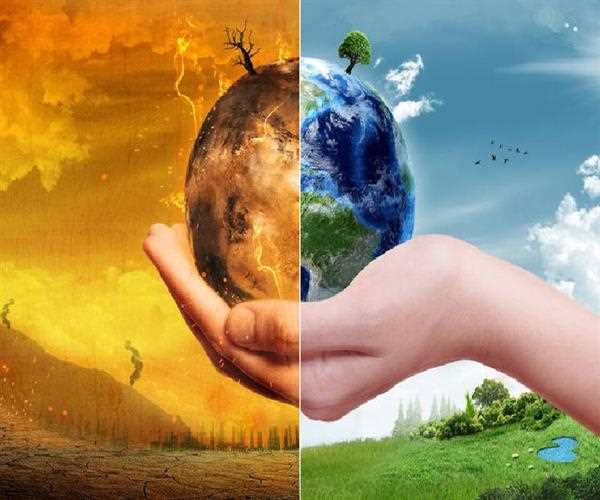Search here

21-Mar-2024 , Updated on 4/3/2024 6:40:57 AM
Earth is facing extreme heat, shows years of data could be very dangerous
Everyone knows that the temperature on Earth is rising each year. It is increasing slowly which actually may seem not a very significant thing for now, but the negative outcomes are devastating. Projections made by climate specialists indicate that by 2100 global temperature would increase by at least 5.7 degrees Fahrenheit at the rate current emission level. It is apparent that this slight increase in the average temperature causes a frenzy of consequent negative impacts to our planet locally, then globally at each level of the eco-system and living organisms, including human beings.
Effect of Human activities on climate change
Human activities, especially burning fossil fuels and cutting of the forests, have generated greenhouse gases which increase the warming and lead to climate change. The CO2 and methane emissions as well as other pollutants resemble a blanket, which in turn causes the temperatures to rise in the atmosphere and trigger chain reactions of environmental damage. That worsens the already existing greenhouse effect and the result is continued rise in temperature.
The other severe consequence for the environment is deforestation since it negatively affects photosynthesis, which is the process of absorption of carbon dioxide particles by plants through the respiration process (inhalation by a green plant). Acting as a carbon sink, forests considerably reduce the levels of carbon dioxide in the atmosphere, and thus counter the greenhouse effect
Effect of increased Temperatures
Hurricane, Storms, Drought, etc unlike the past, not only are of frequent but also more extreme scales, causing an important amount of property damage and risking the lives of the people. Despite the fact that the level of temperatures rises and the heat related deaths and illnesses also grow, putting especially vulnerable groups (elderly, young children, and those with little income, etc.) at risk is one of major consequences.
Heatwaves may lead to heat exhaustion, heat strokes, and not only affect people with pre-existing cardiovascular and respiratory diseases, but make their conditions worse. Besides from the impacts on humans' health, extreme weather and hot temperature also pose risks to agriculture, food security, and water sources that result in crop failures, water scarcity and impacts on ecosystems.
Climate change would not be an idle threat to biological worlds, as many species get extinction symptoms owing to habitat loss, pollution and climate changes. The extinction of a number of species can be hazardous not only to the invertebrates and the vertebrates particularly the ones that act as pollinators and the marine creatures which are the essence of ecosystem health and human life.
Additionally, the uptake of any extra carbon dioxide by the oceans caused ocean acidification, and they also contributed to the destruction of marine ecosystems and events linked to the ocean users in coastal regions. These disasters are not only damaging, causing loss of employment and food security of sizeable part of the population depending on the ocean for their living.
Social and Economic Inequities
Although the world as such is responsive to the harmful effects of global warming and these impacts are the same everywhere, their action in certain areas is not equal neither quantitatively nor qualitatively. To the poor people of developing countries it is the lower class of the society which are first affected by the increase of warmer temperatures, given that they cannot afford a refrigeration or medical services. Poor people, migrant workers, outdoor work force and to people belonging to the marginal groups are those who experience complicated health problems, more medical conditions with no access to the resources of production.
The deprivation of health care, clean water and sanitation which not forgetting changes in the weathers , we only expect the communities to be at risk. Besides social and economic injustices that underscore such inequalities in resilience and adaptive capacity among those communities (marginalized groups) with the least resources to withstand and adapt to climate change, the situation is worsening. Providing for these inequalities in an equal manner need targeted stops to ensure social protection is built, people have access to care and education and poverty is eradicated through innovative development programs.
Conclusion
Climate change, not controlled could be a life-threatening force for humanity and the planet, and extreme heat has got to be counted as one of its big risk factors. It’s not just government job or an NGO’s job to fix the problem. Individually, we need to step forward and save our planet from getting worse. While dealing with climate change necessitates joint effort at all levels of the society such as individuals and communities to governments and international agencies, it remains the collective responsibility to take action. We can beat the risks of rising temperatures only by acting together and contributing to the formation of a safer, healthier and more resilient world for our tomorrow.

Student
An MBA in finance imparts and improves management aptitude, inventive ability, critical thinking ability, and so forth. It offers a real-time experience that fabricates a staunch career foundation for students and working professionals. It helps them to thoroughly understand the financial sector.
Comments
Join Our Newsletter
Subscribe to our newsletter to receive emails about new views posts, releases and updates.
Copyright 2010 - 2025 MindStick Software Pvt. Ltd. All Rights Reserved Privacy Policy | Terms & Conditions | Cookie Policy